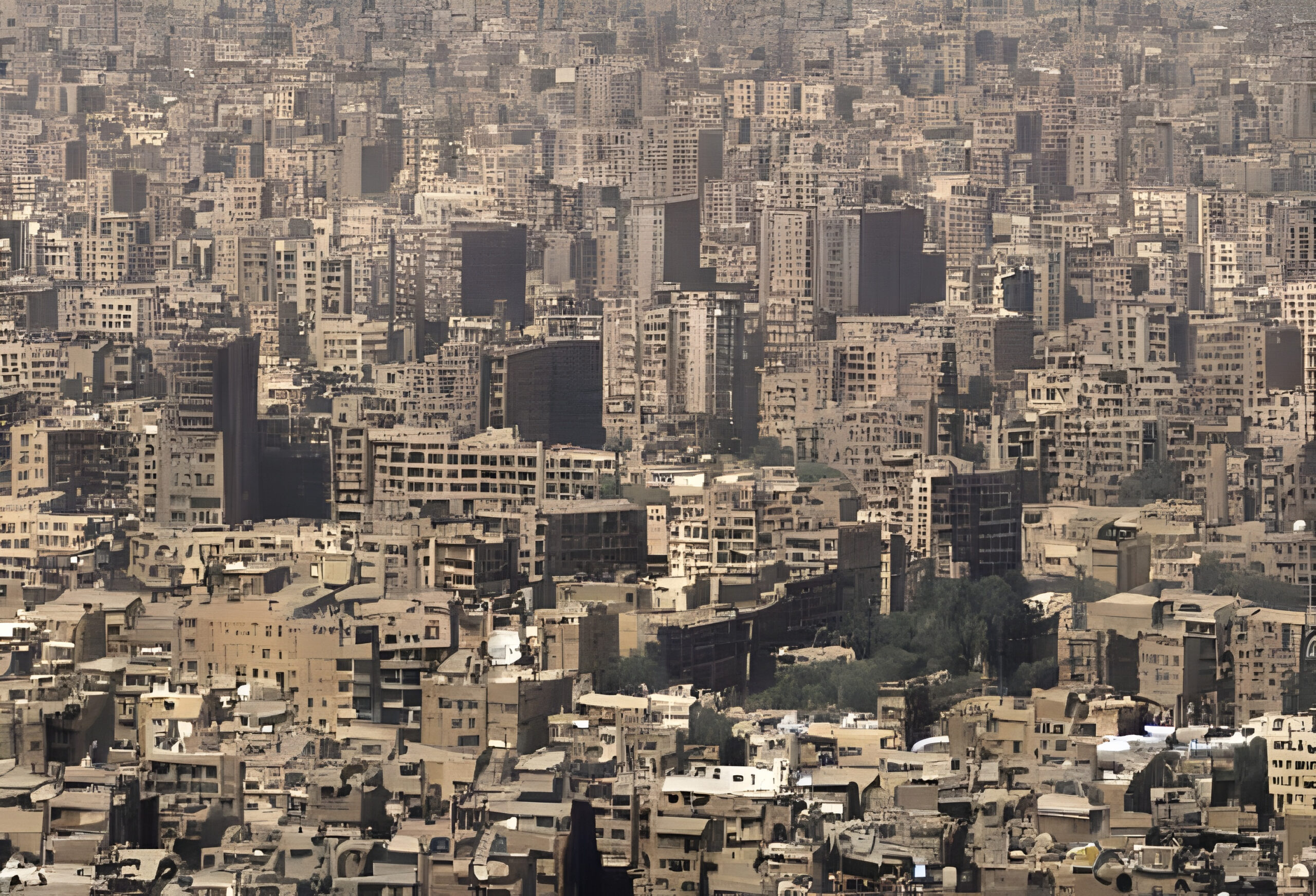“In early October, I toured various exhibitions of electrical appliances to search for the devices I needed for my wedding. When I returned to make purchases in the middle of the same month, I found that prices had significantly increased. When I asked the exhibition owner about the reason for the increase, he replied, ‘Prices are rising every day and won’t stop. Hurry and buy what you need today before tomorrow.’ That’s how Rihma, a bride preparing to set up her new home, described it, adding that she noticed a significant variation in pricing among different exhibitions for the same devices.
Rihma mentioned that over the past three months, all goods experienced a continuous increase in prices, with some items not even available in the markets. She expressed concerns about the ongoing price hikes, especially since she had not completed the setup of her home.
| Egypt has been facing a price hike crisis since the initiation of the economic reform program led by President Abdel Fattah el-Sisi in 2016. The Egyptian government started floating the local currency and borrowed $12 billion from the International Monetary Fund, leading to unprecedented increases in prices for all goods and services. However, looking at the situation since the outbreak of the conflict between the Israeli occupation authority and Palestinian resistance factions in Gaza on October 7th last year, one can see the impacts on the Egyptian market and economy due to the neighboring war. In recent weeks, economic analysts have indicated that the attacks launched by the Houthis from Yemen may also have caused a severe and harsh wave of price hikes. |
The Houthis have launched multiple attacks targeting all Israeli ships or those heading to occupied Palestine through the Bab el-Mandeb strait overlooking Yemen and Djibouti south of the Red Sea. With the escalation of their attacks on ships, it posed a threat to international navigation, revealing other problems on the economic level. The passage of cargo ships in the region, especially those related to the Suez Canal, has been affected, impacting the flow, prices, shipping costs, and insurance against risks. This resulted in a varying increase in the prices of many products and goods, especially those imported from abroad.
| The Central Agency for Public Mobilization and Statistics recorded an annual inflation rate of 36.4% for commodity prices in November last year, compared to 38.5% in October 2023. Egypt was affected by the global wave of rising food prices, with a 13.7% increase in food prices in October last year compared to the same month the previous year. The Egyptian markets also witnessed an increase in the prices of some essential commodities in the last three months of 2023, notably rice reaching over 30 Egyptian pounds per kilogram, lentils approaching 40 pounds, and sugar 50 pounds, according to data from the Cabinet’s commodity prices portal. |
With the ongoing events, the risks facing commercial operations companies inside the Red Sea have increased, and they are likely to experience high levels of tension in the short and medium term. In contrast, prices continue to rise.
Goods Under Attack
Osama Shahed, the head of the Giza Chamber of Commerce, stated in an interview with “Zawia3” that the attacks on ships in the Red Sea have led to an increase in shipping and insurance prices, in addition to the general increase in the prices of imported goods in Egypt. This is especially true for components imported from China, which used to pass through the Red Sea region. He added that with the continued attacks by the Houthis, ships are forced to use the route of Ras Rujaj Al-Saleh and circumnavigate around Africa, unloading in the Mediterranean instead of the Suez Canal and the Red Sea. He pointed out that shipping companies dealing with Egypt in China and Asian countries raised shipping prices from $3,000 to $10,000 per container, confirming that this increase will cast its shadow on the final prices reaching the end consumer, especially with the extended time for the ship’s journey, affecting the shipping costs of goods across the Red Sea, which have increased significantly.
The president of the Giza Chamber of Commerce added that Egypt has the largest volume of trade with China, and the Red Sea is the main route for this exchange, which has become threatened due to the attacks. It is expected that all goods imported will be affected by the current crisis, according to his description, explaining that most components used in engineering industries, wood industries, sanitary tools, and electrical appliances are imported from China.
He expected that if these conditions persist, it would exacerbate the crisis Egypt has been facing regarding the unavailability of electrical appliances in recent times, and also lead to a greater increase in their prices. He added that major shipping companies, controlling 55% of global trade, are currently avoiding passing through the Red Sea region and the Suez Canal, resulting in a reduction in canal revenues and its contribution to the national income.
| According to official data, the volume of trade between Egypt and China reached $14.9 billion during the first 11 months of 2022, compared to $14.5 billion during the same period in 2021, with an increase of 2.6%. The value of Egyptian exports to China recorded $1.7 billion during the first 11 months of 2022, compared to $1.4 billion during the same period in 2021, with an increase of 20.8%. The value of Egyptian imports from China reached $13.2 billion during the first 11 months of 2022, compared to $13.1 billion during the same period in 2021, with an increase of 0.6%. |
In a statement issued by the International Transport and Logistics Department of the Cairo Chamber of Commerce, the Secretary-General of the department, Amr El-Samadoni, expected that the prices of imported goods in Egypt would be generally affected if the attacks by the Houthis in Yemen continued, targeting ships in the Red Sea. He pointed out that the cost of shipping handling – the value of fees and commission for the shipping clearance company – constitutes 50 to 60% of the value of goods. He added that in the case of continued tensions, prices will undoubtedly rise in the coming period, especially since sailing around Africa increases the distance of the ship’s journey by about 3,200 miles compared to crossing the Suez Canal, adding about a million dollars to the fuel cost for trips.
| According to the Central Agency for Public Mobilization and Statistics, the inflation index for the electrical appliances industry decreased to 110.56 in October 2023 compared to September 2023, where it was 112.51, with a decrease of 1.73%, due to the unavailability of necessary raw materials for production. |
The inflation index for the wood, products, and cork industry excluding furniture reached 31.77 in September 2023, compared to 33.43 in October 2023, with a decrease of 5.23%, according to market needs.”
Navigating Hazardous Waters
Maritime insurance companies in London announced an expansion of risk areas in the Red Sea due to increased attacks on commercial ships. The southern Red Sea has been deemed a high-risk area, requiring ships to report when passing through these zones and pay additional insurance fees for coverage lasting up to 7 days.
As a result, war risk premiums have increased from 0.1% to 0.15% to 0.2% of the ship’s value, compared to 0.07% in the period preceding the declaration. This translates to tens of thousands of additional dollars in costs for a journey lasting no more than seven days.
Mohamed Khalifa, a maritime insurance consultant, emphasized that maritime insurance is directly impacted by tensions and conflicts experienced by ships during their voyages. The value of insurance is assessed based on the level of risk faced by the ships. With the heightened frequency of Houthi attacks on ships in the Red Sea region, marine insurance coverages for both ships and transported goods, as well as shipping rates, have increased.
Khalifa explained to “Zawia3” that threats to ships in this area are classified as terrorist attacks, making them the most dangerous type of insurance, leading to increased prices for maritime insurance services. He added that insurance prices for ships opting for the route via Ras Rajaa Al-Salih have also increased, along with the extended duration of the journey, exposing them to additional risks. All these changes cast a shadow on the final price borne by the consumer.
The insurance consultant expects the current situation to impact reinsurance agreements that are supposed to be renewed during this period. Conditions may be added, or prices for maritime insurance risks may increase by reinsurance companies in European and English markets.
| According to the Central Agency for Public Mobilization and Statistics, the trade deficit in November last year decreased by 38.5% to reach $2.15 billion in 2021. The value of exports also decreased by 17.8%, recording $3.79 billion in November last year, while the value of imports decreased by 26.8% during the same period, reaching $5.94 billion. |
In a related context, Dr. Salah El-Din Fahmy, an economics professor at Al-Azhar University, stated that any ship being attacked in the Red Sea region directly affects trade movement in the entire area, especially for Egypt, which benefits significantly from this waterway through trade with other countries and the passage of ships through the Suez Canal, generating national income revenues. He anticipates an increase in the prices of various goods, especially those imported, in the coming period due to these attacks, which have raised shipping, transportation, and insurance costs as well.
Commercial shipping in the Red Sea is a victim of the intense political conflicts in the region, particularly with military movements by Western countries, led by the United States, to confront these attacks threatening international navigation.
Four global shipping companies, representing 53.3% of total global maritime shipping, temporarily redirected their voyages from the Suez Canal to the route of Ras Rajaa Al-Salih. These companies include the Swiss company MSC with 19.3%, the Danish company Maersk with 15%, the French company CMA CGM with 12%, and the German Hapag-Lloyd with 7%, according to Statista statistics.
Before these companies announced the suspension of movement through the Suez Canal, 55 ships had already changed their route to Ras Rajaa Al-Salih since November 19, until December 17. However, 2128 other ships crossed the canal during the same period, according to Osama Rabie, the head of the Suez Canal Authority. The average passage of ships through the Suez Canal ranges from 50 to 60 ships daily, with an annual average of about 19,000 ships, according to the monthly report issued by the container shipping movement.
Amidst the escalating security threats in the Bab El Mandeb region, this will affect all countries bordering the Red Sea. The increased difficulty of using the vital shipping route has led many global shipping companies to redirect their shipments to the route of Ras Rajaa Al-Salih. This adds a considerable distance to the shipping journey, potentially extending the duration by weeks and directly raising costs that cast a shadow on prices.












